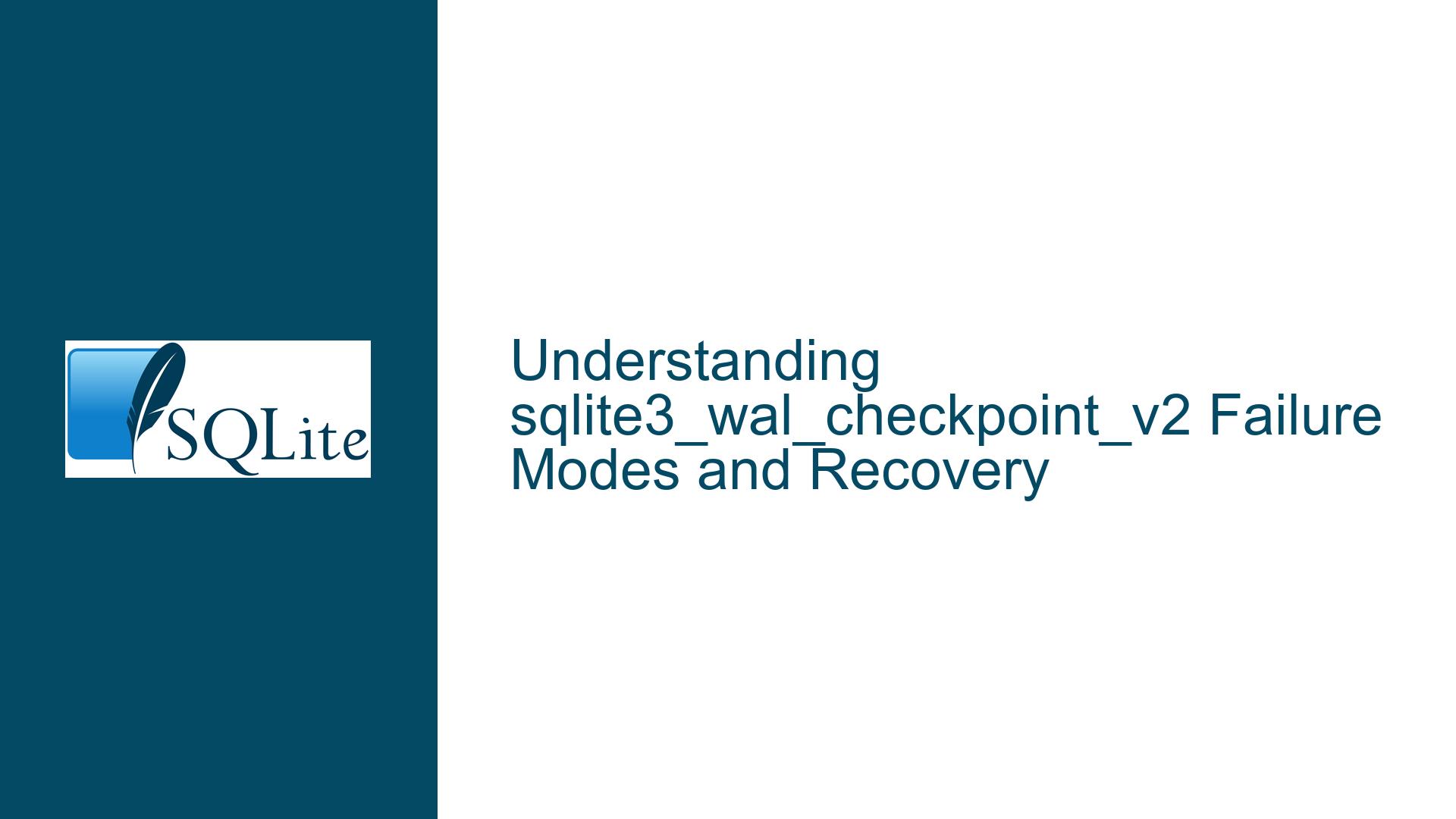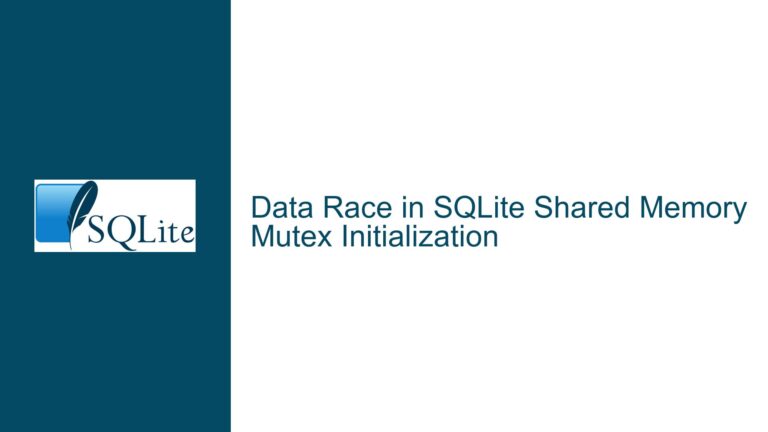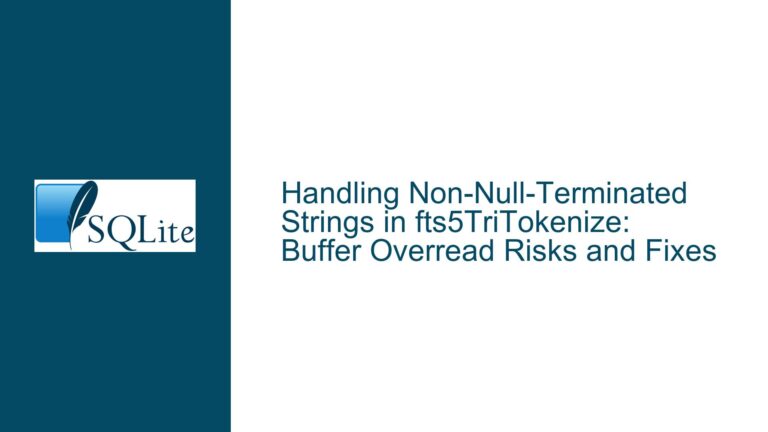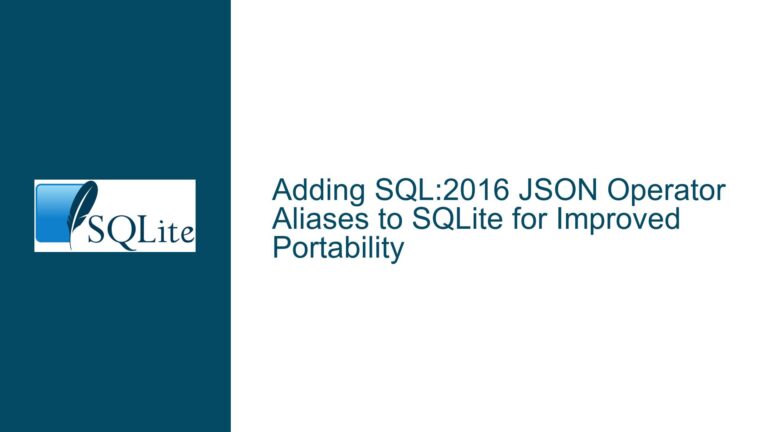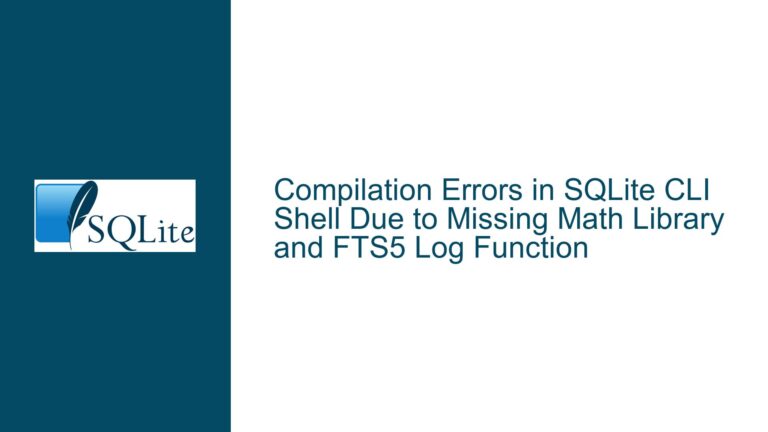sqlite3_wal_checkpoint_v2 Failure Modes and Recovery
Issue Overview: Interrupted Checkpoint Operations and Database Integrity
When working with SQLite in environments where the Write-Ahead Logging (WAL) mechanism is employed, the sqlite3_wal_checkpoint_v2 function plays a critical role in ensuring data consistency between the WAL and the main database file. However, a significant concern arises when a checkpoint operation is interrupted, such as during a power failure or system crash. The core issue revolves around whether the database file can be corrupted during such an interruption and whether a subsequent checkpoint operation can recover the database to a consistent state.
In the described scenario, the WAL is stored in memory while the main database file resides on disk. This setup introduces unique challenges, particularly when attempting to create consistent snapshots of the database for use in a distributed system like dqlite. The primary question is whether the database file can be corrupted if sqlite3_wal_checkpoint_v2 is interrupted and whether re-invoking the checkpoint operation with the same WAL and a modified database file will yield the same result as the original checkpoint operation.
Possible Causes: Why Checkpoint Interruptions May Lead to Database Corruption
The potential for database corruption during an interrupted checkpoint operation stems from the way SQLite manages the WAL and the main database file. The checkpoint process involves several steps, including copying pages from the WAL to the database file and updating the WAL header to reflect the checkpoint’s progress. If the system crashes during this process, the database file may be left in an inconsistent state.
One possible cause of corruption is partial writes to the database file. If the checkpoint operation is interrupted while writing pages from the WAL to the database file, the database file may contain a mix of old and new data, leading to inconsistencies. Additionally, the WAL header, which tracks the checkpoint’s progress, may not be updated correctly, causing confusion during recovery.
Another potential issue is the handling of the WAL index. The WAL index is a critical data structure that maps WAL frames to their corresponding database pages. If the checkpoint operation is interrupted, the WAL index may not be fully updated, leading to incorrect mappings and potential data corruption.
Finally, the interaction between the WAL and the main database file during a checkpoint operation is complex. If the checkpoint is interrupted, the database file may be left in a state where it is not fully synchronized with the WAL, making it difficult to recover the database to a consistent state.
Troubleshooting Steps, Solutions & Fixes: Ensuring Database Integrity After Checkpoint Interruptions
To address the issue of database corruption during interrupted checkpoint operations, several steps can be taken to ensure database integrity and facilitate recovery.
First, it is essential to understand the behavior of sqlite3_wal_checkpoint_v2 during an interruption. When the checkpoint operation is interrupted, SQLite will attempt to recover the database to a consistent state during the next startup. This recovery process involves reading the WAL and applying any unapplied changes to the database file. If the WAL is intact and the database file is not corrupted, the recovery process should succeed, and the database should be restored to a consistent state.
However, if the database file is corrupted due to partial writes or other issues, the recovery process may fail. In such cases, it is crucial to have a backup of the database file and the WAL. By restoring the database file from the backup and reapplying the WAL, it is possible to recover the database to a consistent state.
To minimize the risk of database corruption during checkpoint operations, it is recommended to use the SQLITE_CHECKPOINT_RESTART or SQLITE_CHECKPOINT_TRUNCATE modes with sqlite3_wal_checkpoint_v2. These modes ensure that the checkpoint operation is completed in a single pass, reducing the likelihood of partial writes and other issues.
Additionally, it is important to ensure that the WAL is stored in a reliable location, such as on disk, rather than in memory. While storing the WAL in memory can improve performance, it also increases the risk of data loss during a system crash. By storing the WAL on disk, the risk of data loss is minimized, and the recovery process is more likely to succeed.
Finally, it is crucial to test the recovery process thoroughly. By simulating various failure scenarios, such as power failures and system crashes, it is possible to identify potential issues and ensure that the recovery process works as expected. This testing should include scenarios where the checkpoint operation is interrupted at different stages, as well as scenarios where the WAL is partially written or corrupted.
In conclusion, while interrupted checkpoint operations can lead to database corruption, careful planning and testing can minimize the risk and ensure that the database can be recovered to a consistent state. By understanding the behavior of sqlite3_wal_checkpoint_v2, using appropriate checkpoint modes, and storing the WAL in a reliable location, it is possible to maintain database integrity even in the face of system failures.
